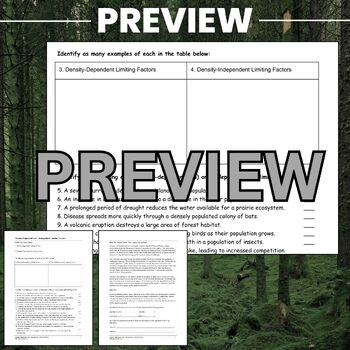In ecology, limiting factors are environmental conditions that restrict the growth, abundance, or distribution of an organism or a population within an ecosystem. These factors can be biotic or abiotic and play a crucial role in shaping the dynamics of ecosystems. Biotic limiting factors include predation, competition for resources, and disease, while abiotic limiting factors encompass factors like temperature, water availability, and soil nutrients.
Understanding limiting factors is essential for maintaining ecological balance and biodiversity within an ecosystem. By identifying and addressing these factors, scientists and conservationists can implement strategies to protect endangered species, restore degraded habitats, and ensure the long-term health of our planet’s ecosystems.
Ecology Limiting Factors Worksheet
Examples of Limiting Factors
One common example of a limiting factor in ecology is food availability. In a predator-prey relationship, the abundance of prey organisms can limit the population size of predators. If prey populations decline due to factors like overhunting or habitat destruction, predator populations may also suffer due to a lack of food.
Another example of a limiting factor is water availability. In arid regions, plants and animals may struggle to survive due to limited access to water. Drought conditions can severely impact ecosystems, leading to food shortages, habitat loss, and increased competition for resources among species.
Ecology Limiting Factors Worksheet
To help students understand the concept of limiting factors in ecology, educators often use worksheets to reinforce key concepts and provide hands-on learning opportunities. An ecology limiting factors worksheet may include questions and activities related to identifying biotic and abiotic limiting factors, analyzing case studies of ecosystem dynamics, and brainstorming solutions to address limiting factors in real-world scenarios.
By completing an ecology limiting factors worksheet, students can deepen their understanding of how environmental conditions shape the behavior and distribution of organisms within ecosystems. This interactive learning tool can help students develop critical thinking skills, improve scientific literacy, and foster a greater appreciation for the natural world.
